By Kendi Muthomi
Kenya has recently witnessed the incredible sight of the migratory African White Caper butterflies. This natural phenomenon has not only sparked our curiosity but also raised important questions about its implications and benefits.
Migration patterns
The African White Caper butterfly, scientifically known as Belenois aurota, is a migratory insect known for its seasonal flights from November to February. These flights coincide with Kenya’s dry season, which is probably why people often associate this butterfly with the onset of drought. This mass migration is irregular, and frequency can vary. It occurs every few years, and it is facilitated by climate-related factors.
The typical habitats of the white caper butterfly include dry areas such as grasslands, semi-deserts, scrubs, and open forests. If you see them resting on crops, it means they are taking a break from their flight as they search for enough food, places to breed and other resources. To feed as larvae and lay their eggs as adults, they require a caper bush.
Reasons for migration
African White Caper butterflies migrate due to a combination of factors, such as temperature changes, and the availability of essential resources like nectar-rich flowers and caper bushes for laying eggs. This migratory behavior is innate and deeply ingrained in their genetic programming, which allows the species to adapt to changing environmental conditions over time. The migration of these butterflies is carefully balanced to ensure optimal reproductive conditions, access to abundant resources, and avoidance of adverse environmental challenges.
Where are they from and where are they going to?
The African White Caper butterflies that are being spotted in Kenya are indigenous to the area, and their migration is a natural part of their life cycle within their native range.
As for their destination, we’d need to obtain precise information through extensive field research and tracking. Local entomologists are saying the butterflies are within the borders. However, the migratory routes may be influenced by factors, such as the availability of appropriate breeding sites, favorable weather conditions, and an abundance of food resources, especially their preferred host plant – the caper bushes.
Biology & development
The white caper butterflies lay their eggs in groups of 25 to 30 on the leaves of caper bushes. The eggs have a distinct shape with a tall and ribbed structure, and they are firmly attached to the leaves with a specialized “glue” to ensure they remain securely in place.
See images below.
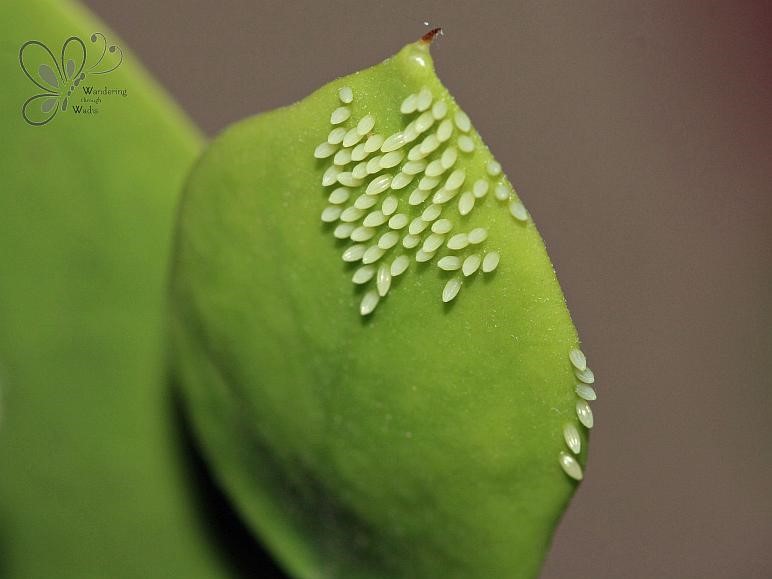
Photos: Bernadette Simpson
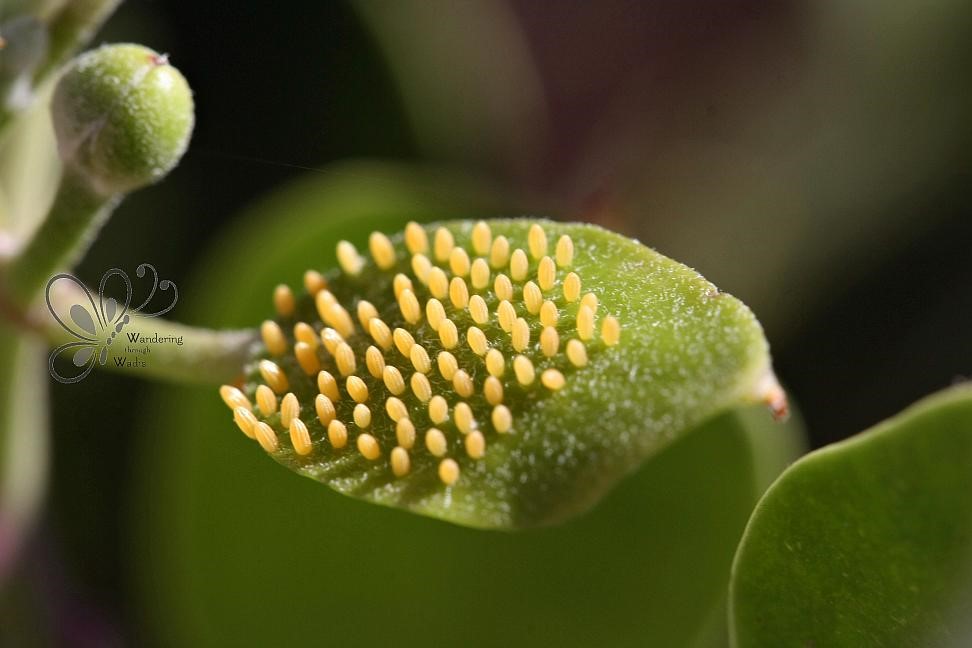
After hatching, the larvae, also known as caterpillars, have an olive-green color and glossy black heads. This stage is the only feeding stage and is also called the damaging stage. The larvae live and feed in groups and swiftly consume the thick caper leaves as they continue to grow. These flights coincide with Kenya’s dry season, which is why people often associate this butterfly with the onset of drought.
See images below.
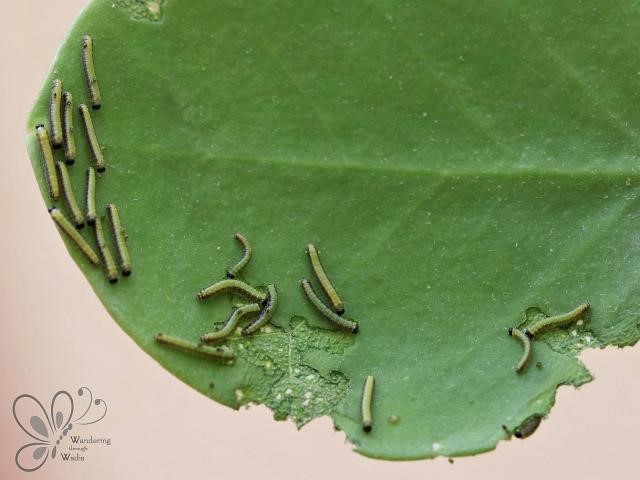
Photos: Bernadette Simpson
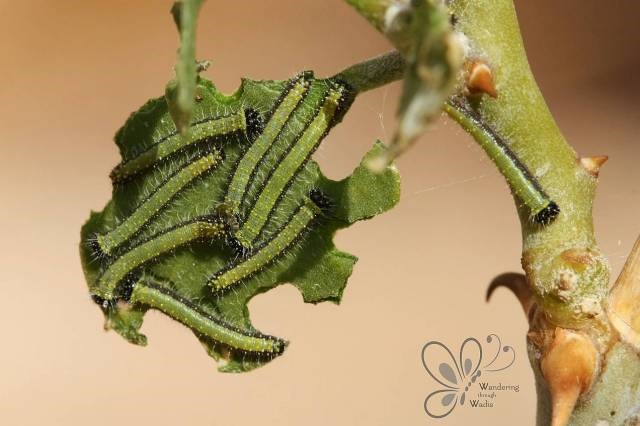
The larvae undergo several molts (instars) during their growth process. The older larvae are hairy and have a green stripe running along their backs, as well as mottled black stripes along their sides.
After their final molt, they transform into their chrysalis or pupa stage. The pupa is cream-colored with black markings and round yellow dots. They attach themselves in groups to the leaves or stems of caper bushes using a sticky thread.
See images below.

Photos: Bernadette Simpson
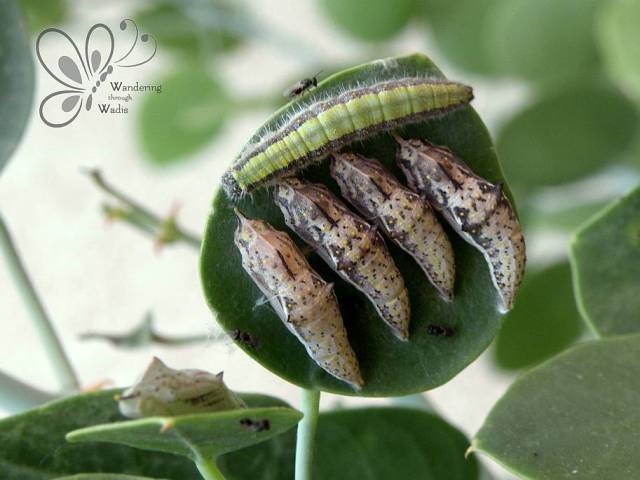
Adult butterflies emerge after 7 – 10 days. Their wings are white with black or dark brown veins and measure about 4 cm across. Once they emerge, they begin to feed and mate. To fuel their journey, they stop at flowers for nectar which explains why you may see them making several stops while flying.
See images below.
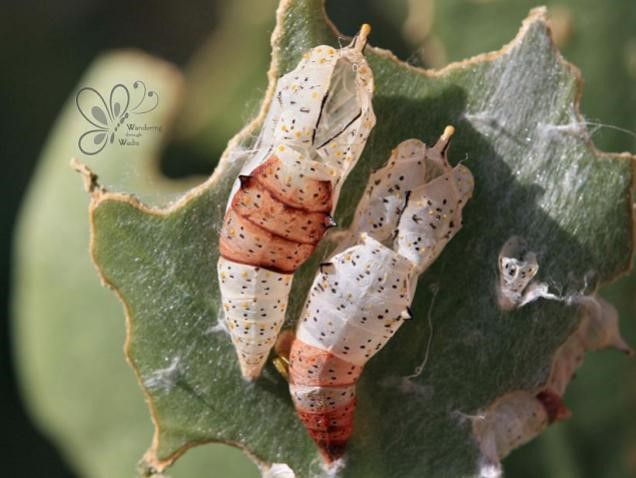
Photos: Bernadette Simpson

Benefits of the butterflies
Despite the many unfounded myths, White Caper butterflies play a crucial role in maintaining the ecological balance. They serve as crucial components in the food web, acting as a food source for various predators such as birds and other insects. This creates a dynamic balance within the ecosystem, preventing any single species from becoming overly dominant and ensuring the survival of a diverse array of organisms.
Their interactions with local flora and fauna contribute to biodiversity and ecosystem health. One of the most significant ecological services provided by these butterflies is pollination. As they visit various flowers in search of nectar, they inadvertently transfer pollen facilitating the reproductive process.
Lastly, nature has a calming effect on the human mind. The sight of butterflies fluttering around can act as a natural stress reliever. Studies have shown that exposure to nature, even in the form of simple visual stimuli like butterflies, can reduce stress levels and promote relaxation.
Will the butterflies harm my vegetables?
No, they won’t. Most insects have a limited range of plants they feed on, known as host range. The white caper butterflies feed on plants in the Caper family and do not harm Brassicas. Based on my previous research, key pests of Brassica include the diamondback moth (Plutella xylostella), cabbage worm (Pieris rapae), and cabbage loopers (Trichoplusia ni), all of which fall under the Lepidoptera order of insects.
Muthomi, Kendi Purity M.Sc. is a Ph.D candidate – Entomology & Nematology
Office: The Fruit and Vegetable IPM Lab
Department of Entomology and Nematology, University of Florida



